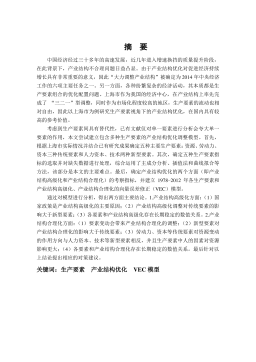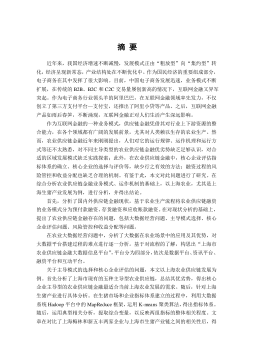冰球式蓄冷空调系统设计与实验研究
摘要冰蓄冷空调系统以其“削峰填谷”的优势,获得了电力生产部门和空调用户的青睐,已经在国内外日益得到高度重视和广泛应用。目前对系统的研究大都集中在蓄冰槽动态特性研究,冰蓄冷空调系统优化配置,系统的经济性分析等方面。由于冰球式蓄冷空调系统具有蓄冷密度大、空间利用效率高、设备简单、系统阻力小、使用寿命长等优点,因而在蓄冷系统中应用的比较多。本文以冰球式蓄冷空调系统的蓄冷槽为核心部件,从理论和实验中研究蓄冷过程和释冷过程的影响因素。主要研究工作有以下几个方面:(1)设计并搭建冰蓄冷空调系统实验台。为了研究冰球式蓄冷系统的特性,作者作为设计者之一,查阅了很多关于冰蓄冷系统设计的文献及原著,在总结大量前人...
相关推荐
-
我国基层财政困难的制度成因分析与对策研究VIP免费

 2024-09-20 46
2024-09-20 46 -
我国煤电产业链纵向交易合约机制研究VIP免费

 2024-09-20 44
2024-09-20 44 -
生产要素视角下的上海市产业结构优化研究VIP免费

 2025-01-09 8
2025-01-09 8 -
我国银行业结构与经济结构关系研究VIP免费

 2025-01-09 18
2025-01-09 18 -
大数据视角下农业供应链金融研究VIP免费

 2025-01-09 14
2025-01-09 14 -
跨国大型综合超市的规划研究VIP免费

 2025-01-09 9
2025-01-09 9 -
跨境电商农产品质量安全问题研究VIP免费

 2025-01-09 9
2025-01-09 9 -
世界市场的虚拟化与我国国际电子商务发展方向研究VIP免费

 2025-01-09 46
2025-01-09 46 -
中国政府对电力行业的价格规制问题研究VIP免费

 2025-01-09 20
2025-01-09 20 -
中小企业信息化系统集成技术研究VIP免费

 2025-01-09 30
2025-01-09 30
相关内容
-

跨国大型综合超市的规划研究
分类:高等教育资料
时间:2025-01-09
标签:无
格式:PDF
价格:15 积分
-

跨境电商农产品质量安全问题研究
分类:高等教育资料
时间:2025-01-09
标签:无
格式:PDF
价格:15 积分
-

世界市场的虚拟化与我国国际电子商务发展方向研究
分类:高等教育资料
时间:2025-01-09
标签:无
格式:PDF
价格:15 积分
-

中国政府对电力行业的价格规制问题研究
分类:高等教育资料
时间:2025-01-09
标签:无
格式:PDF
价格:15 积分
-

中小企业信息化系统集成技术研究
分类:高等教育资料
时间:2025-01-09
标签:无
格式:PDF
价格:15 积分





